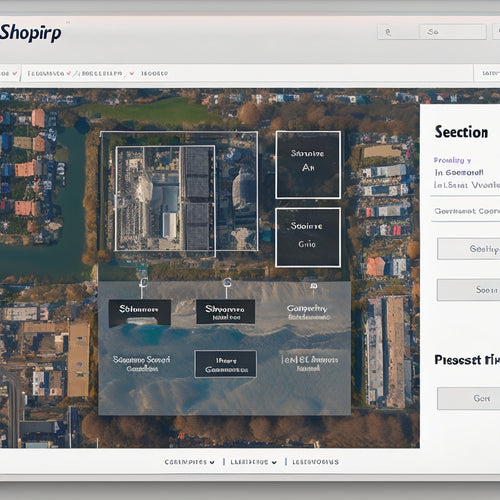
E-commerce Revolution: From Past to Present
Share
The e-commerce revolution has undergone a transformative journey, marked by significant milestones and technological advancements that have reshaped the retail landscape. From its inception in the 1960s with Electronic Data Interchange (EDI) to the rise of the internet, mobile devices, and social media, e-commerce has evolved to meet changing consumer behaviors and preferences. Today, businesses must adapt to new market dynamics, innovate, and prioritize customer interactions to remain competitive. As the e-commerce landscape continues to shift, understanding its evolution and nuances is pivotal for success, and a closer examination of its past, present, and future will reveal more.
Key Takeaways
• E-commerce has evolved significantly since the 1960s, driven by technological advancements and shifting consumer behavior.
• The rise of the internet, mobile devices, and social media has transformed the market, forcing traditional retailers to adapt or perish.
• Today, customers demand personalized experiences, convenience, and flexibility, which retailers must provide through omnichannel experiences and targeted marketing.
• New business models like subscription services and social commerce have emerged, and retailers must innovate to remain competitive in the digital landscape.
• Effective navigation of the e-commerce revolution requires understanding its benefits and drawbacks, as well as adapting to changing consumer preferences and market dynamics.
E-commerce Evolution Over Time
The e-commerce landscape has undergone a transformative transformation since its inception in the 1960s, with the advent of Electronic Data Interchange (EDI) marking the beginning of a journey that would revolutionize the way businesses operate and interact with customers.
Technological advancements have played a pivotal role in shaping consumer behavior, with the rise of the internet, mobile devices, and social media platforms. This shift has greatly impacted market dynamics, as businesses have been forced to adapt to changing consumer preferences and behaviors.
The evolution of e-commerce has led to a seismic shift in industry impact, with traditional retailers struggling to keep pace with online giants like Amazon and Alibaba. As the e-commerce landscape continues to evolve, it is essential for businesses to stay ahead of the curve by embracing innovation and responding to changing market conditions.
The Rise of Digital Retail
Digital transformation has catapulted retail into an unprecedented era of innovation, as brick-and-mortar stores give way to virtual marketplaces and omnichannel experiences that seamlessly integrate online and offline engagement. This shift has led to a profound impact on online consumer behavior, with customers expecting personalized experiences, convenience, and flexibility.
Technology advancements have been instrumental in driving this change, enabling retailers to gather and analyze vast amounts of customer data, and respond with targeted marketing strategies. The rise of digital retail has also led to the emergence of new business models, such as subscription services and social commerce, which are redefining the way consumers interact with brands.
As technology continues to evolve, retailers must stay agile and adapt to changing consumer preferences to remain competitive in this rapidly shifting landscape.
Benefits and Drawbacks Explored
E-commerce, with its vast reach and convenience, presents a multitude of benefits, including 24/7 shopping, wider product selection, and lower start-up costs for entrepreneurs. This digital platform offers numerous advantages, making it an appealing option for businesses and consumers alike.
Convenience and flexibility: E-commerce allows customers to shop from anywhere, at any time, eliminating geographical and time constraints.
Expanded market reach: Online stores can cater to a global audience, breaking down physical barriers and enabling businesses to reach a broader customer base.
Cost-effectiveness: E-commerce reduces operational costs, such as rent and inventory storage, allowing businesses to allocate resources more efficiently.
While e-commerce offers several pros, it also has its cons. Understanding the advantages versus disadvantages is vital for businesses to navigate the digital retail landscape effectively.
E-commerce Models and Strategies
Business entrepreneurs and organizations can adopt diverse e-commerce models, each catering to specific customer needs and preferences, to stay competitive in the rapidly evolving online marketplace.
By understanding market dynamics, businesses can tailor their strategies to effectively engage with customers and drive sales.
Effective e-commerce models prioritize customer interactions, leveraging digital channels to facilitate seamless transactions and foster loyalty.
Strategies such as omnichannel retailing, personalized marketing, and data-driven decision-making enable businesses to adapt to shifting market dynamics and stay ahead of the competition.
Building a Successful Online Store
A well-crafted online store is crucial for the success of an e-commerce venture, as it acts as a digital storefront that displays products and offers an intuitive shopping experience to customers. To build a thriving online store, focusing on conversion optimization is vital, making sure that the website is user-friendly and streamlined to boost sales.
Moreover, implementing customer retention strategies is necessary to cultivate loyalty and encourage repeat business.
Here are three key considerations for developing a flourishing online store:
-
Enhance product pages: Optimize product details to be precise, engaging, and visually appealing, with clear prompts to drive sales.
-
Simplify checkout procedures: Streamline the payment process to decrease cart abandonment rates and enhance the overall user experience.
-
Incorporate personalized marketing: Utilize data and analytics to create tailored promotions and deals that resonate with customers, improving their overall shopping experience.
Frequently Asked Questions
What Percentage of Online Shoppers Abandon Their Carts Due to High Shipping Costs?
Like a delicate house of cards, online shopping carts come crashing down when high shipping costs strike, with a staggering 63% of online shoppers abandoning their carts due to exorbitant pricing, making shipping costs a major obstacle in the e-commerce landscape.
Can E-Commerce Businesses Operate Without a Physical Warehouse or Inventory?
E-commerce businesses can operate without a physical warehouse or inventory by leveraging inventory management strategies and adopting the dropshipping model, where products are shipped directly from suppliers, eliminating the need for storage and inventory management.
How Do E-Commerce Companies Protect Customer Data From Cyber Threats?
'Over 60% of e-commerce sites are vulnerable to cyber attacks. To safeguard customer data, companies employ strong data encryption, conduct regular security audits, and provide cybersecurity training to employees to prevent breaches and guarantee a secure online shopping experience.'
What Role Do Social Media Influencers Play in Promoting E-Commerce Products?
Social media influencers play a pivotal role in promoting e-commerce products through influencer partnerships and strategic marketing collaborations, fostering brand awareness and credibility through engaging content, ultimately driving conversions and sales.
Are There Any Country-Specific Laws Governing E-Commerce Transactions?
Beyond borders, country-specific laws govern e-commerce transactions, addressing concerns on tax regulations, consumer rights, international trade, and data privacy, ensuring a secure and regulated online marketplace that prioritizes customer safety and trust.
Related Posts
-

Optimizing Shopify App Marketing: Strategies for Success
This article focuses on the optimization of Shopify app marketing strategies for achieving success. It provides insi...
-

Adding Sitemap to Your Shopify Store: A Complete Guide
This article aims to provide a comprehensive guide on the process of adding a sitemap to a Shopify store. A sitemap ...
-

How to Do Product Bundles on Shopify
Product bundles are a popular strategy for e-commerce businesses to increase sales and customer satisfaction. This a...


